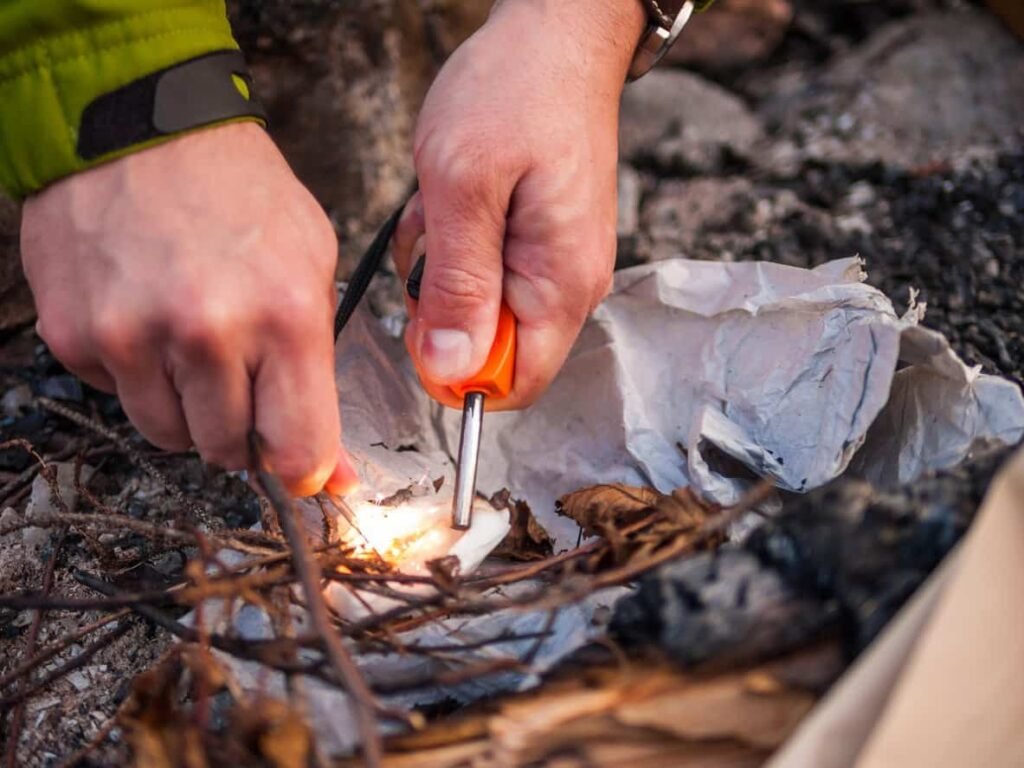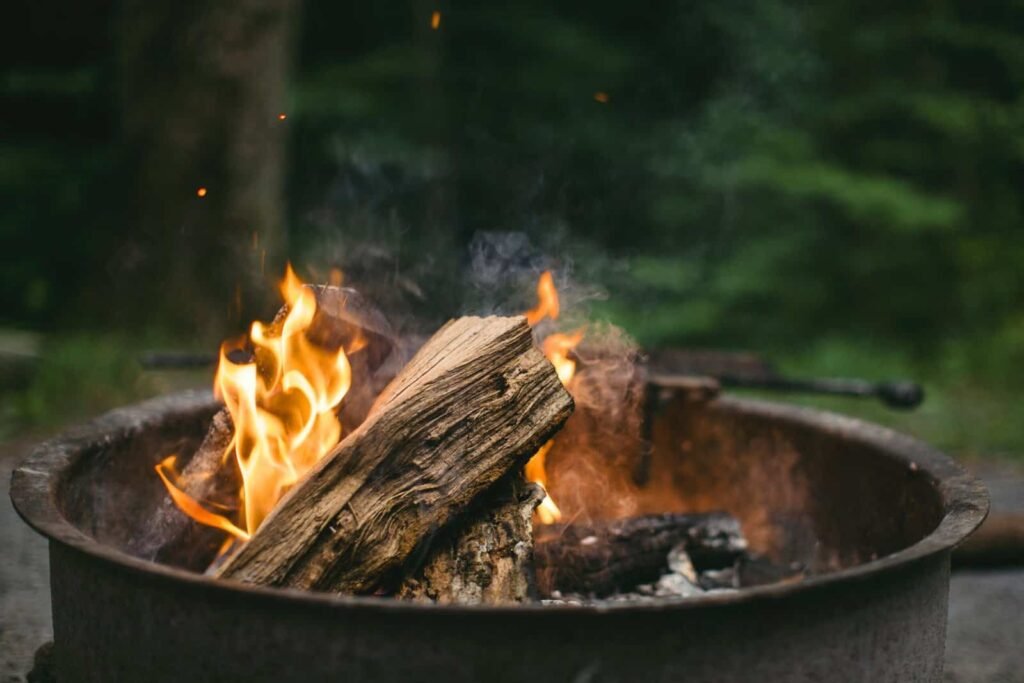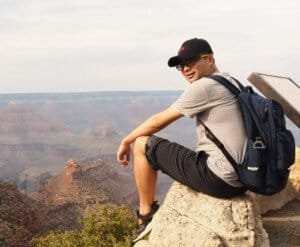Starting a fire is crucial for outdoor enthusiasts, campers, and survivalists. Knowing how to start a fire without a lighter can be a lifesaver.
In our previous article, How to Start a Fire Without a Lighter, we explored various methods. This article introduces the basics of fire starters—essential tools that make fire-starting easier and more reliable. We’ll discuss different types, materials, and effective use. Whether you’re camping or enhancing survival skills, understanding fire starters will help you stay warm, cook food, and stay safe outdoors.
What is a Fire Starter and What Are the Types Available?
A fire starter is a tool or material used to ignite a fire quickly and reliably. Fire starters are essential for campers, hikers, and survivalists because they simplify the fire-starting process, especially in challenging conditions. There are several types of fire starters available, each with its unique benefits:
Ferro Rods:
- Description:A ferro rod is a metal rod made from ferrocerium. When scraped with a hard object like a knife, it produces hot sparks.
- Benefits:Ferro rods are durable, work in wet conditions, and can produce thousands of sparks. They are lightweight and easy to carry.
Flint and Steel:
- Description:This traditional method uses a piece of flint rock and a steel striker. Striking the flint against the steel creates sparks.
- Benefits:Flint and steel are reliable and can be used repeatedly. They are a good backup fire-starting method.
Matches:
- Description:Matches are small sticks coated with a chemical that ignites when struck against a rough surface.
- Benefits:Matches are easy to use and lightweight. Waterproof matches are available for use in wet conditions.
Lighters:
- Description:Lighters are portable devices that produce a flame using fuel, such as butane.
- Benefits:Lighters are convenient and provide a steady flame. Windproof lighters are available for challenging weather.
Chemical Fire Starters:
- Description:These include fire starter blocks, gels, and pastes made from flammable chemicals.
- Benefits:Chemical fire starters ignite easily and burn for a long time, making them excellent for starting fires in difficult conditions.
Homemade Fire Starters:
- Description:Homemade fire starters can be made from materials like cotton balls coated with petroleum jelly, wax-coated pine cones, or dryer lint stuffed in egg cartons.
- Benefits:They are cost-effective and customizable. Homemade fire starters can be made from readily available household items.
Understanding the different types of fire starters helps you choose the best one for your needs. Whether you prefer the reliability of a ferro rod, the convenience of matches, or the long burn time of chemical fire starters, having the right tool makes building a fire easier and more efficient.

How to start a fire without a lighter?
Starting a fire without a lighter might seem like a daunting task, but with the right knowledge and materials, it can be accomplished quite easily. Here’s a step-by-step guide on how to start a fire without a lighter.
Firstly, gather the necessary materials. You will need some kindling, which are small, dry pieces of wood or twigs. It’s also helpful to have larger pieces of wood or logs for the main fuel source. In addition, you’ll need something to create friction, such as a flint and steel or even a battery and a piece of foil.
Next, create a fire pit. Clear away any debris or loose materials in the area where you want to start the fire. Make sure the pit is in a safe location, away from any flammable objects or overhanging branches. Once the pit is ready, arrange your kindling in a small pile within it.
To create a spark, use your friction device. If you’re using a flint and steel, strike the flint against the steel until a spark is produced. If using a battery and foil, carefully touch the ends of the battery to the foil to create a spark. Hold the spark near the kindling pile, aiming for the dryest, most flammable pieces.
Once you’ve successfully created a spark and ignited the kindling, gently blow on the small flame to help it grow. As the fire begins to catch, gradually add larger pieces of wood to sustain the flame. Be sure to keep the fire controlled and never leave it unattended.
Starting a fire without a lighter requires patience and practice, but with these steps, you’ll be able to create a warm, comforting flame in no time. Always remember to prioritize safety and never start a fire in an area where it could cause harm or damage.
How Do You Prepare Materials to Build the Fire?
Preparing the right materials is crucial for building a successful fire. Here’s how to gather and prepare the necessary components using a fire starter:
Gathering Tinder:
- Dry and Flammable:Collect tinder that is dry and easy to ignite. Good options include dry leaves, grass, bark, paper, and cotton balls coated with petroleum jelly. Make sure the tinder is fluffy to catch sparks easily.
- Fine and Fibrous:The best tinder is fine and fibrous, allowing it to ignite quickly. Tear or fluff up the tinder to increase its surface area, making it more likely to catch fire.
Collecting Kindling:
- Small Sticks and Twigs:Kindling consists of small sticks and twigs that catch fire from the tinder and help build the initial flames. These pieces should be slightly larger than tinder but still small enough to ignite quickly.
- Dry Wood:Ensure that the kindling is dry. Arrange it in a teepee or crisscross pattern over the tinder to allow air to flow and feed the fire.
Preparing Fuel Wood:
- Larger Logs:Fuel wood includes larger logs and branches that keep the fire burning once the kindling is ignited. These pieces should be big enough to sustain the fire but not so large that they smother it.
- Seasoned Wood:Use dry, seasoned wood for fuel to ensure a clean and efficient burn. Wet or green wood can produce a lot of smoke and may be difficult to keep burning.
Creating a Fire Pit:
- Safe Location:Choose a safe location for your fire. Clear the area of flammable materials like dry leaves and branches. If possible, use a designated fire pit or create a circle of stones to contain the fire.
- Fireproof Surface:Ensure the fire is built on a fireproof surface, such as dirt or sand, to prevent it from spreading.
Using a Fire Starter:
- Igniting the Tinder:Use your fire starter, such as a ferro rod, match, or lighter, to ignite the tinder. Hold the fire starter close to the tinder and create sparks or a flame.
- Building the Fire:Once the tinder ignites, carefully add the kindling in a teepee or crisscross pattern. As the kindling catches fire, gradually add larger pieces of fuel wood to build and sustain the fire.
Maintaining the Fire:
- Airflow:Ensure there is enough airflow around the fire. Proper air circulation helps the fire burn efficiently and prevents it from smothering.
- Monitoring:Keep an eye on the fire and add more fuel as needed to maintain a steady burn. Never leave the fire unattended.
By preparing the right materials and using a reliable fire starter, you can build a fire quickly and efficiently. Whether you’re camping, hiking, or in a survival situation, knowing how to gather and prepare tinder, kindling, and fuel wood is essential for creating a successful fire.

Safety Start Fire with Fire Starter
Safety is paramount when starting a fire, especially when using a fire starter. Here are important safety guidelines to follow:
Choose a Safe Location:
- Clear the Area:Ensure the area where you plan to start the fire is free from flammable materials like dry leaves, grass, and overhanging branches. This helps prevent the fire from spreading.
- Use a Fire Pit:If available, use a designated fire pit. If not, create a circle of stones to contain the fire and keep it controlled.
Prepare for Emergencies:
- Have Water Ready:Always have a bucket of water, sand, or a fire extinguisher nearby to quickly put out the fire if it gets out of control.
- Keep a Fire Blanket:A fire blanket can smother any flames that spread unexpectedly.
Monitor the Fire:
- Never Leave Unattended:Never leave your fire unattended. Always have someone watching it to ensure it stays under control.
- Keep It Small:Start with a small fire and gradually add more wood. A large fire can quickly become uncontrollable, especially in windy conditions.
Using a Fire Starter:
- Proper Handling:When using a fire starter like a ferro rod, scrape away from your body to avoid injury. Hold the fire starter firmly and use controlled, deliberate strokes to produce sparks.
- Safe Ignition:When igniting chemical fire starters or accelerants, use only a small amount and stand back once you ignite it to avoid sudden flare-ups.
Wind Conditions:
- Check Wind Direction:Be aware of the wind direction. Position yourself so that the wind blows the sparks and flames away from you and any flammable materials.
- Create Wind Barriers:If it’s windy, create a barrier with rocks or logs to shield the fire from strong gusts that could spread it.
Extinguishing the Fire:
- Douse Thoroughly:When you’re done with the fire, extinguish it thoroughly. Pour water over the fire, stir the ashes, and pour more water until everything is cool to the touch.
- Check for Embers:Ensure there are no remaining embers that could reignite. Cover the area with dirt or sand to smother any hidden sparks.
Respect Fire Bans:
- Follow Local Regulations:Always check local regulations and fire bans before starting a fire. In dry or windy conditions, authorities may prohibit fires to prevent wildfires.
- Compliance:Follow all rules and guidelines to ensure you are not putting yourself or others at risk.
By following these safety precautions, you can enjoy the benefits of starting a fire with a fire starter while minimizing the risks. Being prepared and cautious ensures that your fire-starting experience is safe and enjoyable. Always prioritize safety to protect yourself and the environment.
How to Choose Your Best Fire Starter?
Choosing the best fire starter depends on your needs and the quality of the product. As Baiyuheng, a trusted manufacturer of fire starters, we offer products that stand out for their reliability and efficiency. Our fire starters are made from high-quality ferrocerium, ensuring they produce hot, consistent sparks even in challenging conditions. They are durable and designed to last, capable of producing thousands of sparks. Our fire starters are also lightweight and easy to carry, making them perfect for camping, hiking, and emergency situations. Additionally, they come with comfortable, ergonomic handles for better grip and control. With Baiyuheng fire starters, you can confidently ignite a fire anytime, anywhere, making your outdoor adventures safer and more enjoyable.
FAQ
Q1: What is the best tinder to use with a fire starter?
A: The best tinder includes dry leaves, grass, bark, paper, cotton balls coated with petroleum jelly, and small twigs. These materials catch sparks easily and ignite quickly.
Q2: How do you use a ferro rod to start a fire?
A: Hold the ferro rod close to your tinder. Use a hard object like the back of a knife to scrape the rod, creating sparks that ignite the tinder. Once the tinder catches fire, add kindling and larger wood to build your fire.
Q3: Can I use a fire starter in wet conditions?
A: Yes, fire starters like ferro rods and waterproof matches can be used in wet conditions. Ensure your tinder is dry by storing it in a waterproof container or using materials like cotton balls coated with petroleum jelly.
Q4: What safety precautions should I take when using a fire starter?
A: Choose a safe location, have water or a fire extinguisher nearby, never leave the fire unattended, and fully extinguish the fire when done. Follow local fire regulations and be cautious with wind direction.
Q5: How do chemical fire starters work?
A: Chemical fire starters, such as fire starter blocks, gels, or pastes, are made from flammable chemicals. They ignite easily and burn steadily, providing enough heat to start your tinder and kindling.
Q6: What are some alternative fire-starting methods if I don’t have a fire starter?
A: Alternatives include using flint and steel, a magnifying glass to focus sunlight, or traditional methods like a bow drill or hand drill. These methods require more effort and practice but are effective in emergencies.
Conclusion
Starting a fire with a fire starter is an essential skill for outdoor enthusiasts and survivalists. By understanding the types of fire starters available, how to prepare materials, and the safety precautions to take, you can confidently ignite a fire in various conditions. Fire starters like ferro rods, flint and steel, and chemical fire starters offer reliable options to ensure you stay warm, cook food, and signal for help when needed. Choosing high-quality fire starters, such as those from Baiyuheng, provides additional benefits like durability, ease of use, and consistent performance. With the right tools and knowledge, you can enhance your outdoor experiences and be prepared for any situation.


